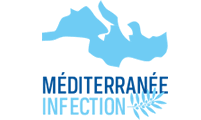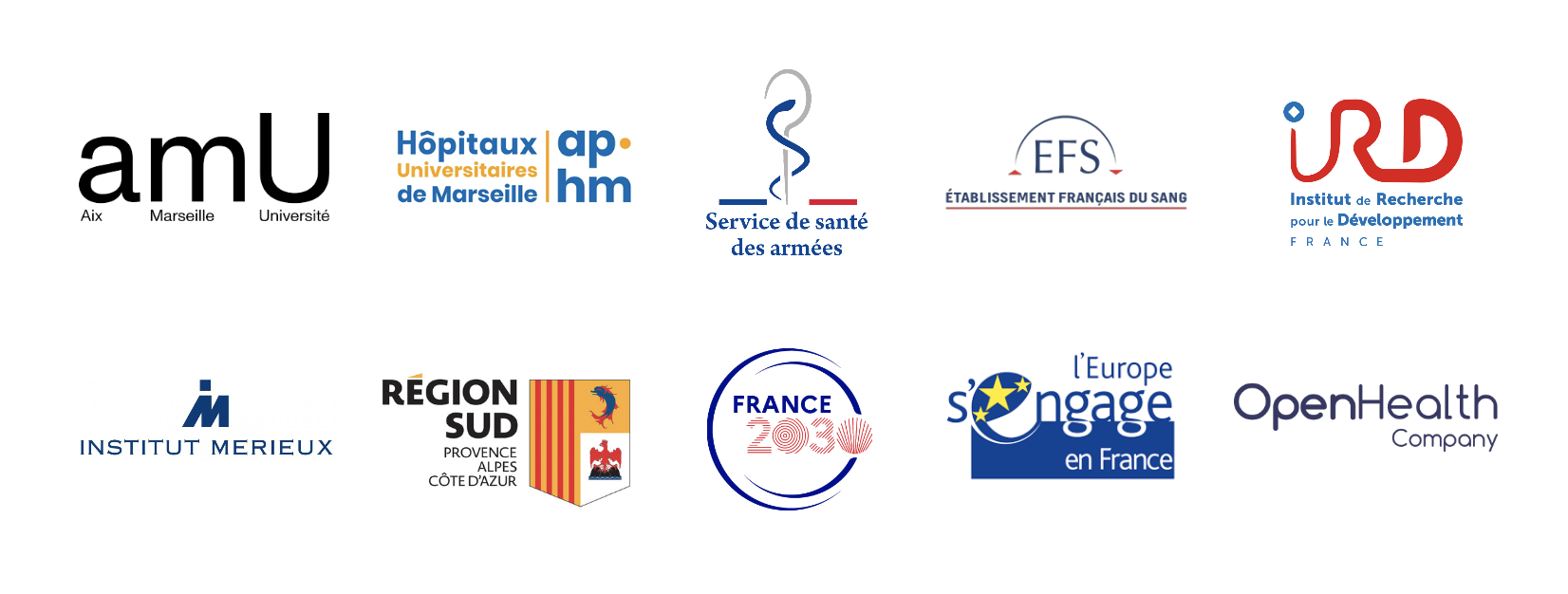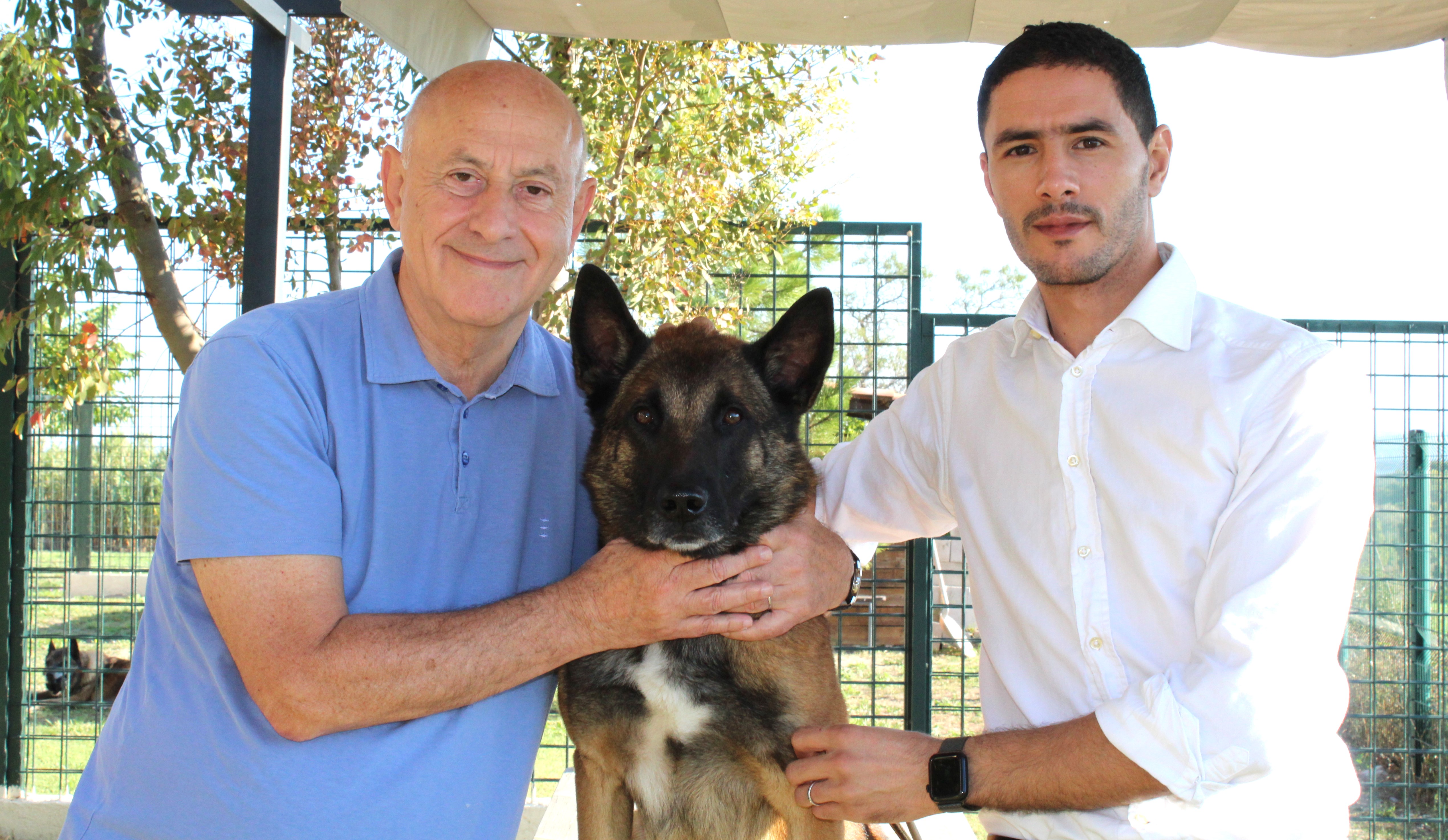
Contact
Bernard Davoust
04 13 73 20 39
bernard.davoust@mediterranee-infection.com
Younes Laidoudi
04 13 73 20 39
younes.laidoudi@mediterranee-infection.com
Composition de l’équipe
L’équipe est composée de trois vétérinaires spécialisés (infectiologie – épidémiologie – microbiologie – parasitologie) et des étudiants.
PRÉSENTATION
Le Centre de recherche vétérinaire (CRV) de l’IHU est une structure réactive, légère d’emploi, mobile, adaptée aux investigations de vigilance active sur des animaux (domestiques ou sauvages, vivants ou morts) suspects de maladies infectieuses zoonotiques ou inconnues, ou susceptibles d’être des porteurs asymptomatiques d’agents pathogènes (animaux réservoirs), avérés ou potentiels, pour l’homme.
Le CRV mène des études interdisciplinaires intégrant la santé animale, humaine et environnementale. Cette approche « One Health » est un atout majeur pour comprendre la dynamique des maladies infectieuses dans les différents écosystèmes.
Un tel centre vétérinaire au sein d’un hôpital est unique au monde. Il rend possible, au jour le jour, des collaborations médecins-vétérinaires.
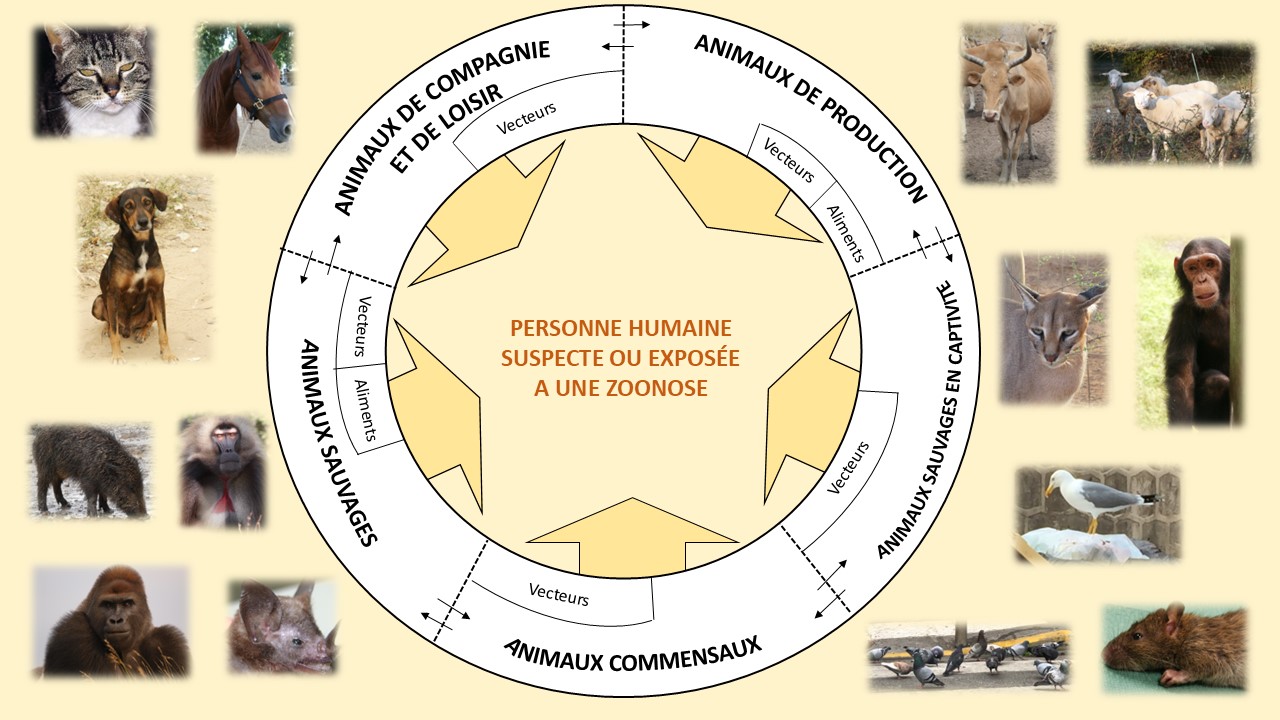
EXPERTISE
- Réalisation sur le terrain d’enquêtes épidémiologiques relatives à des animaux présents dans l’environnement de personnes atteintes (ou suspectes) de zoonoses.
- Anticipation, déploiement, exécution, adaptabilité au terrain, en tout temps et en tous lieux.
- Autopsie d’animaux morts de manière naturelle ou accidentelle.
- Collecte d’échantillons issus d’animaux : « le bon prélèvement, au bon moment, bien conservé » récoltés, en particulier de manière non invasive (fèces).
- Surveillance épidémiologique de cohortes : chiens militaires en opérations extérieures, chiens de refuges, troupeaux sentinelles…
- Réception à l’IHU de prélèvements (sang, fèces, biopsies…), d’ectoparasites et d’endoparasites d’origine animale.
- Mise en œuvre de toutes les techniques diagnostiques disponibles pour la détection des agents pathogènes, du terrain au laboratoire.
- Identification et isolement d’agents pathogènes à partir d’échantillons animaux cliniques.
- Evaluation de la fiabilité de tests de diagnostic rapide des infections animales, par comparaison avec les méthodes de référence.
- Support à la médecine vétérinaire fondée sur les faits.
- Connaissance et respect de toutes les réglementations en vigueur, en particulier en matière de bien-être des animaux et de biosécurité.
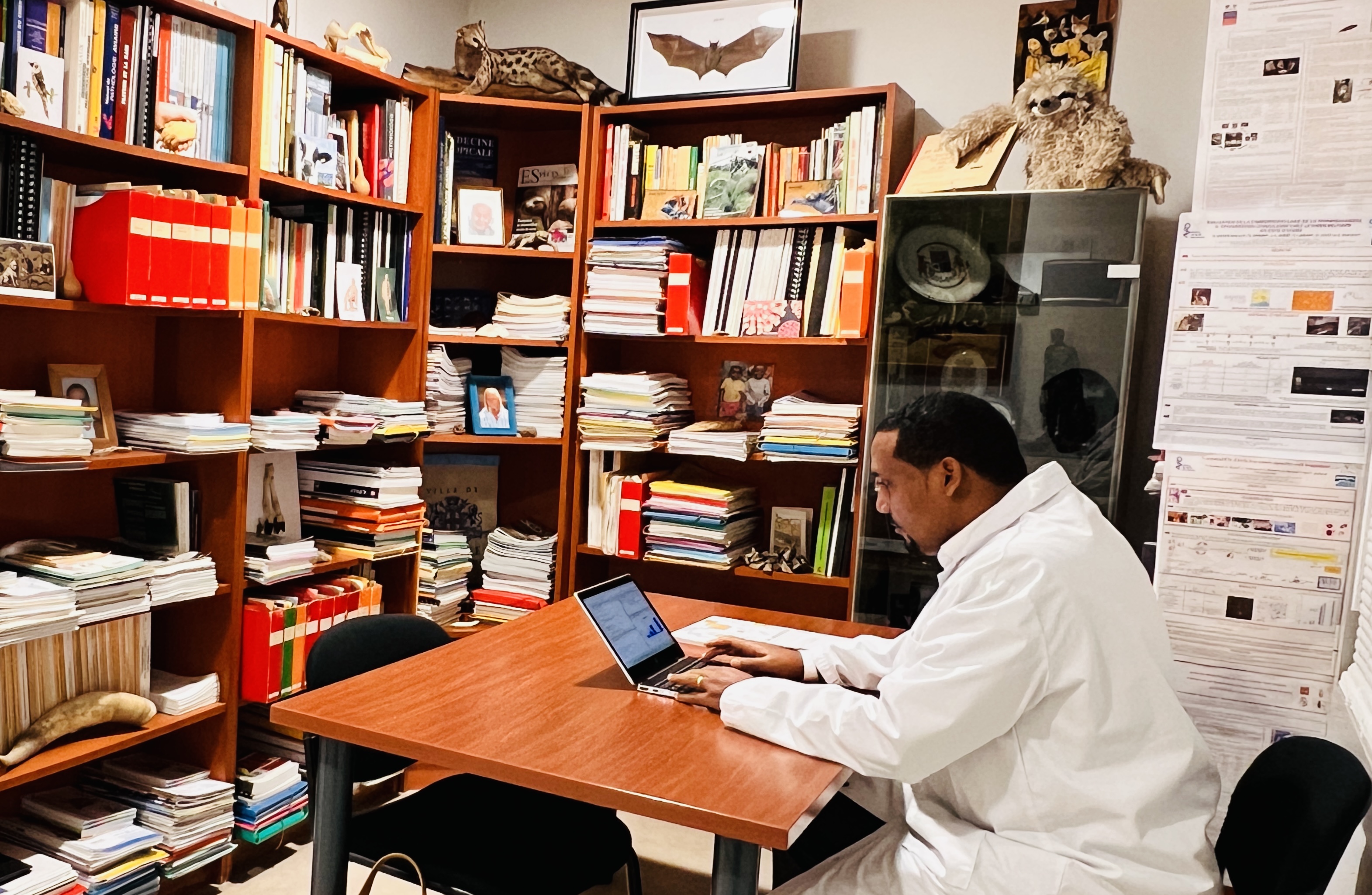
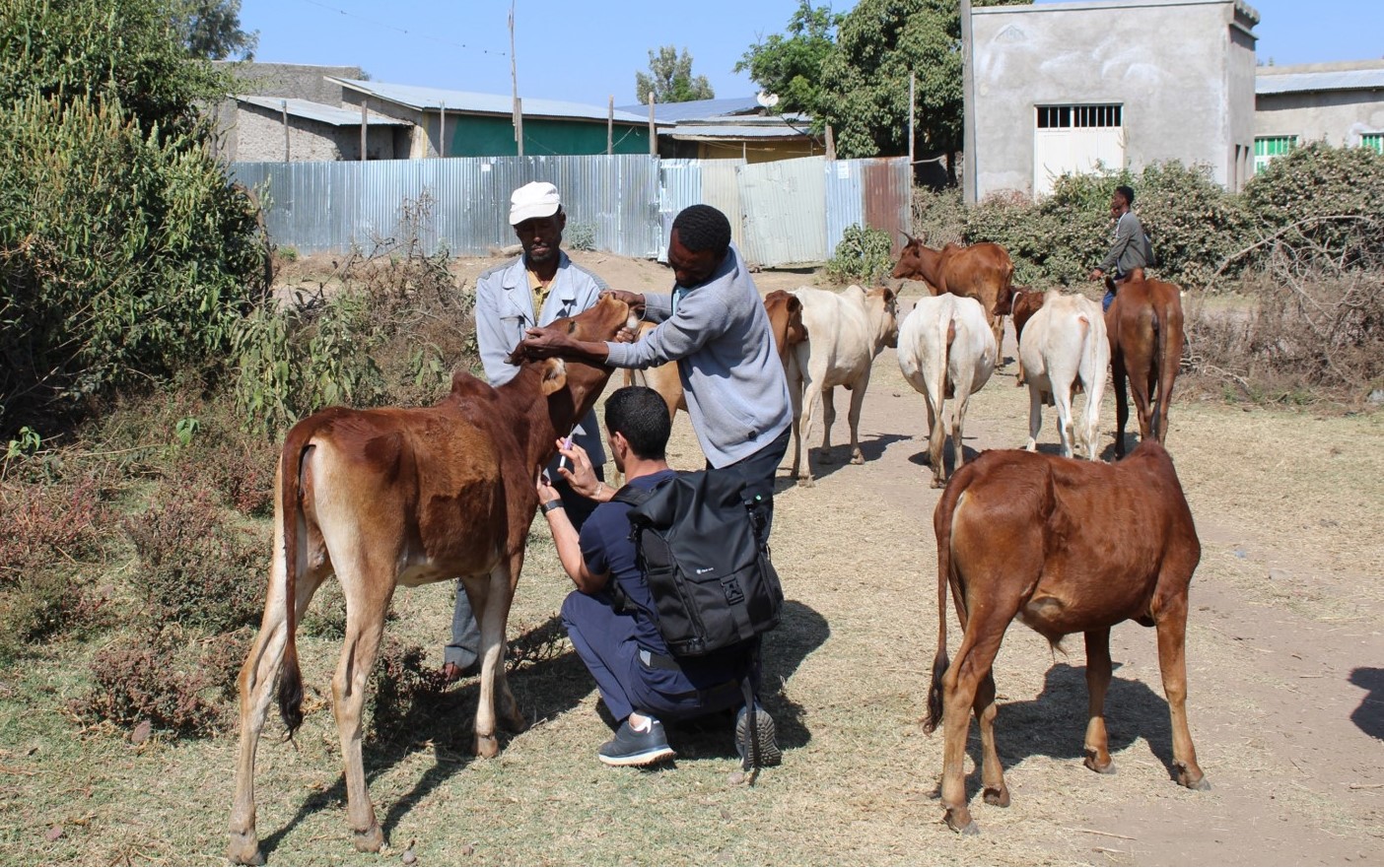
ÉQUIPEMENT ET TECHNOLOGIES
- Emploi de moyens mobiles, déployables rapidement, permettant de réaliser des enquêtes épidémiologiques sur le terrain.
- Matériels adaptés pour le recueil et le transport d’échantillons animaux, du terrain à l’IHU.
- Salles d’examen clinique de petits animaux vivants et d’autopsie vétérinaire, isolées du reste de l’IHU.
- Microscope scanner (Motic easy-scan one®).
- Deux séquenceurs MinION (ONT®) : Mk1B, Mk1C.
SPÉCIFICITÉS
- Cryothèque de 46 000 échantillons animaux (sérums, sang, fèces, etc.) recueillis sur des dizaines d’espèces animales des cinq continents, depuis 25 ans.
- Collection d’ADN d’origine animale, positifs pour de nombreuses infections zoonotiques.
- Relations avec un vaste réseau, français et étranger, de vétérinaires, de zoologistes, de personnes en relation avec des animaux (abattoirs, refuges, parcs zoologiques, centres équestres, sociétés de chasse, Office français de la biodiversité, etc.) et de responsables politiques et administratifs concernés.
- Partenariats avec des vétérinaires militaires.
- Collaborations avec une quinzaine de laboratoires de référence en microbiologie et parasitologie animales.
- Point focal pour l’importation à l’IHU des échantillons d’origine animale en provenance de pays tiers à l’Union européenne (Arrêté préfectoral 2011).
OUTILS INFORMATIQUES
- Trois ordinateurs pour analyses de données (i9-14e, RTX-GeoForce 4090).
- Plateforme d’analyses de séquences 16S pour le métabarcodage des bactéries.
DÉVELOPPEMENT EN COURS
- Intégration de l’intelligence artificielle dans la microscopie digitale pour le diagnostic des maladies infectieuses (coproscopies, parasites sanguins, etc.).
- Capacités innovantes en génomique (métabarcodage).
- Lieu de formation et d’accueil de stagiaires.
- Collaborations internationales, notamment en Afrique (Algérie, Ethiopie).
RÉALISATIONS
- LAIDOUDI Y, SEVESTRE J, BEDJAOUI S, WATIER-GRILLOT S, DAVOUST B. Serosurvey of canine leishmaniasis in five departments near an identified human clinical case in Marseille (France). One Health 2024, 19, 100855. https://doi.org/10.1016/j.onehlt.2024.100855
- LAIDOUDI Y, ROUSSET E, DESSIMOULIE AS, PRIGENT M, RAPTOPOULO A, HUTEAU Q, CHABBERT E, NAVARRO C, FOURNIER PE, DAVOUST B. Tracking the source of human Q fever from a southern French village: sentinel animals and environmental reservoir. Microorganisms 2023, 11. https://doi.org/10.3390/microorganisms11041016
- DAVOUST B and LAIDOUDI Y. Reservoir of zoonotic agents moving beyond denial and fear. Pathogens 2023, 12, 1081.https://doi.org/10.3390/pathogens12091081
- LAIDOUDI Y, DURAND G, WATIER-GRILLOT S, DESSIMOULIE AS, LABARDE C, NORMAND T, ANDRÉO V, GUÉRIN P, GRARD G, DAVOUST B. Evidence of antibodies against the West Nile virus and the Usutu virus in dogs and horses from the southeast of France. Transbound. Emerg. Dis. 2023, 70. https://doi.org/10.1155/2023/8779723
- LAIDOUDI Y, BONI M, MARIÉ JL, DAVOUST B. Epidémiosurveillance du surmulot à Marseille. Acad. Vet. France 2023, 176, 1, 286-296. https://www.persee.fr/doc/bavf_0001-4192_2023_num_176_1_18295
- LAIDOUDI Y, NGAIGANAM E.P., MARIÉ J.‐L., PAGNIER I., ROLAIN J.‐M., MOUHAMADOU DIENE S., DAVOUST B. Colistin resistance mechanism in Enterobacter hormaechei steigerwaltii isolated from wild boar (Sus scrofa) in France. Pathogens 2022, 11, 1022. https://doi.org/10.3390/pathogens11091022
- DAVOUST B, GUERIN P, ORAIN N, FLIGNY C, FLIRDEN F, FENOLLAR F, MEDIANNIKOV O & EDOUARD S. Evidence of antibodies against SARS-CoV-2 in wild mustelids from Brittany (France). Transbound Emerg Dis., 2022, 69, e3400-e3407.https://doi.org/10.1111/tbed.14663
- LAIDOUDI Y, DAVOUST B., WATIER-GRILLOT S, OGER A, LE POTIER M-F, DEBLANC C. Serological survey of Aujeszky’s disease in wild boar from southeastern France. Pathogens 2022, 11, 1107. https://doi.org/10.3390/pathogens11101107
- MEDKOUR H, CATHELAND S, BOUCRAUT-BARALON C, LAIDOUDI Y, SEREME Y, PINGRET JL, MILLION M, HOUHAMDI L, LEVASSEUR A, CABASSU J & DAVOUST B. First evidence of human-to-dog transmission of SARS-CoV-21.160 variant in France. Transbound Emerg Dis., 2021, 69, 4, e823-e830. https://doi.org/10.1111/tbed.14359
- LAIDOUDI Y, SEREME Y, MEDKOUR H, WATIER-GRILLOT S, SCANDOLA P, GINESTA J, ANDRÉO V, LABARDE C, COMTET L, POURQUIER P, RAOULT D, MARIÉ JL & DAVOUST B. SARS-CoV-2 antibodies seroprevalence in dogs from France using ELISA and an automated western blotting assay. One Health, 2021, 13, 100293. https://doi.org/10.1016/j.onehlt.2023.100588
- LAIDOUDI Y, OTRANTO D, STOLOWY N, AMRANE S, RANJU RSM, POLETTE L, WATIER-GRILLOT S, MEDIANNIKOV O, DAVOUST B & L’OLLIVIER C. Human and animal dirofilariasis in Southeast of France. Microorganisms, 2021, 9, 1544. https://doi.org/10.3390/microorganisms9071544
- MEDKOUR H, LAIDOUDI Y, DAHMANA H, SALVI B, LEPIDI H, MEDIANNIKOV O & DAVOUST B. Severe pneumonia in a street rat (Rattus norvegicus) caused by Rodentibacter rarus strain RMC2. Open Vet. J., 2021, 11(1), 165-173. https://doi.org/10.4314/ovj.v11i1.24
- LAIDOUDI Y, MEDKOUR H, TAHIR D, DAHMANA H, MARIÉ JL, VARLOUD M, MEDIANNIKOV O & DAVOUST B. Field evaluation of preventic efficacy of monthly multimodal prophylactic treatment (Milbactor® and Vectra®) against Dirofilaria in dogs. Parasitologia, 2021, 1, 130-136. https://doi.org/10.3390/parasitologia1030014
- LAIDOUDI Y, BARRÉ-CARDI H, AYHAN N, VARLOUD M, MEDIANNIKOV O, OTRANTO D & DAVOUST B. Molecular diagnosis of Dirofilaria in mosquitoes from Corsica Island, France. Parasit. Vectors, 2021, 14, 427. https://doi.org/10.1186%2Fs13071-021-04931-y
- DAVOUST B, WATIER-GRILLOT S, ROQUEPLO C, RAOULT D & MEDIANNIKOV O. Detection of zoonotic pathogens in animals performed at the University Hospital Institut Méditerranée Infection (Marseille – France). One Health, 2021, 12, 100210. https://doi.org/10.1016/j.onehlt.2020.100210
- ROQUEPLO C, LEPIDI H, MEDKOUR H, LAIDOUDI Y, MARIÉ JL & DAVOUST B. Enzootic hepatic capillariasis (Calodium hepaticum) in street rats (Rattus norvegicus) from Marseille city, France. Pathogens, 2020, 9, 1048. https://doi.org/10.3390%2Fpathogens9121048
- CALVET F, MEDKOUR H, MEDIANNIKOV O, GIRARDET C, JACOB A, BONI M & DAVOUST B. An African canine trypanosomosis case import: Is there a possibility of creating a secondary focus of Trypanosoma congolense infection in France? Pathogens, 2020, 9, 709. https://doi.org/10.3390/pathogens9090709
- LAIDOUDI Y, MARIÉ JL, TAHIR D, WATIER-GRILLOT S, MEDIANNIKOV O & DAVOUST B. Detection of canine-borne filariasisand their Wolbachia endosymbionts in French Guiana. Microorganisms, 2020, 8, 770. https://doi.org/10.3390%2Fmicroorganisms8050770
- SANCHEZ FERNANDEZ P, KODJO A, MEDKOUR H, LAIDOUDI Y, DUBOURG G, ELDIN C, PAROLA P, DAVOUST B & LAGIER JC. Autochthonous human and animal leptospirosis, Marseille, France. IDCases, 2020, e00899. https://doi.org/10.1016%2Fj.idcr.2020.e00899
- LAIDOUDI Y, MEDKOUR H, LATROFA MS, DAVOUST B, DIATTA G, SOKHNA C, BARCIELA A, HERNANDEZ-AGUILAR RA, RAOULT D, OTRANTO D & MEDIANNIKOV O. Zoonotic Abbreviata caucasica in wild chimpanzees (Pan troglotydes verus) from Senegal. Pathogens, 2020, 9, 517. https://doi.org/10.3390%2Fpathogens9070517
- LAIDOUDI Y, DAVOUST B, VARLOUD M, NIANG EHA, FENOLLAR F & MEDIANNIKOV O. Development of a multiplexed qPCRs-based approach for the diagnosis of Dirofilaria immitis, D. repens, Acanthocheilonema reconditum and the others filariosis. Parasit. Vectors, 2020, 13, 319. https://doi.org/10.1186/s13071-020-04185-0
- MANGOMBI JB, ROQUEPLO C, SAMBOU M, DAHMANI M, MEDIANNIKOV O, COMTET L & DAVOUST B. Seroprevalence of Crimean-Congo hemorrhagic fever in domesticated animals in Northwestern Senegal. Vector Borne Zoon. Dis., 2020, 20, 10, 797-799. https://doi.org/10.1089/vbz.2019.2592
- MEDKOUR H, LAIDOUDI Y, MARIÉ JL, FENOLLAR F, DAVOUST B & MEDIANNIKOV O. Molecular investigation of vector-borne pathogens in red foxes (Vulpes vulpes) from southern France. J Wild Dis., 2020, 56, 4, 837-850. https://doi.org/10.7589/2019-09-234
- MEDKOUR H, DAVOUST B, ANGELAKIS M, THIERY R, RAOULT D, ROUSSET E, PAROLA P & ELDIN C. A sporadic case of acute Q fever and identification of the animal source of the infection. Folia Microbiol., 2020, 65, 5, 797-800. https://doi.org/10.1007/s12223-020-00788-3
- MARIÉ JL, WATIER-GRILLOT S, ROQUEPLO C & DAVOUST B. Pathogènes, faune sauvage et camps militaires du Sud-Est de la France. Bull Acad Vét France. 2020, 173, 1, 231-243. https://www.persee.fr/doc/bavf_0001-4192_2020_num_173_1_12978

